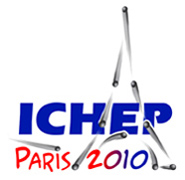Speaker
Daniel Kikola
(Lawrence Berkeley Nat. Lab./Warsaw Univ. of Technology)
Description
According to lattice QCD calculation, the suppression pattern of quarkonia states is expected to provide insight into thermodynamic properties of hot and dense matter, Quark-Gluon Plasma (QGP), predicted to be created in relativistic heavy ions collisions at RHIC energies. The suppression in this calculation is caused by screening of the binding potential between quark and antiquark in QGP. To understand the suppression of heavy quark hadron production in heavy-ion collisions a systematic measurement is required in p+p, d+Au and Au+Au collisions. For J/ψ, the data from p+p collisions may allow us to understand the basic production mechanisms, such as due to direct production, parton fragmentation and feed down from higher states while the data from the p+A collision would provide insights into contributions from cold nuclear matter effects.
In this talk we will report results on heavy quarkonia production via di-electron decay channel in mid-rapidity in p+p, d+Au, Cu+Cu and Au+Au collisions at sqrt(sNN)=200 GeV in STAR. Special emphasis would be given to J/ψ measurements at high pT to understand the basic processes of quarkonium production and to compare the measurements with several model calculations of the J/ψ nuclear modification factor. Measurements of Upsilon production in p+p, d+Au and Au+Au collisions will be also reported. Presented results will be compared with theoretical models for quarkonia production.
Primary author
Daniel Kikola
(Lawrence Berkeley Nat. Lab./Warsaw Univ. of Technology)




